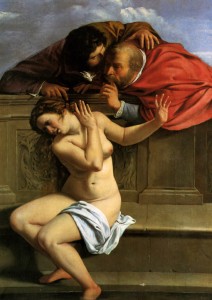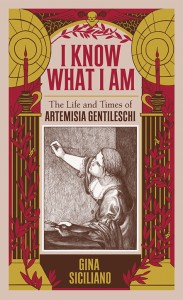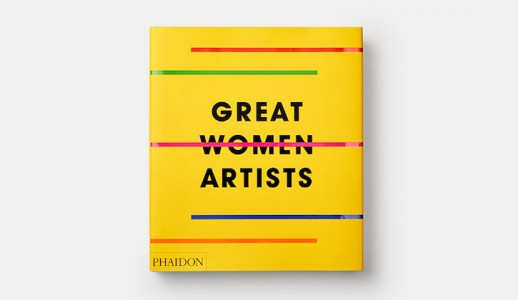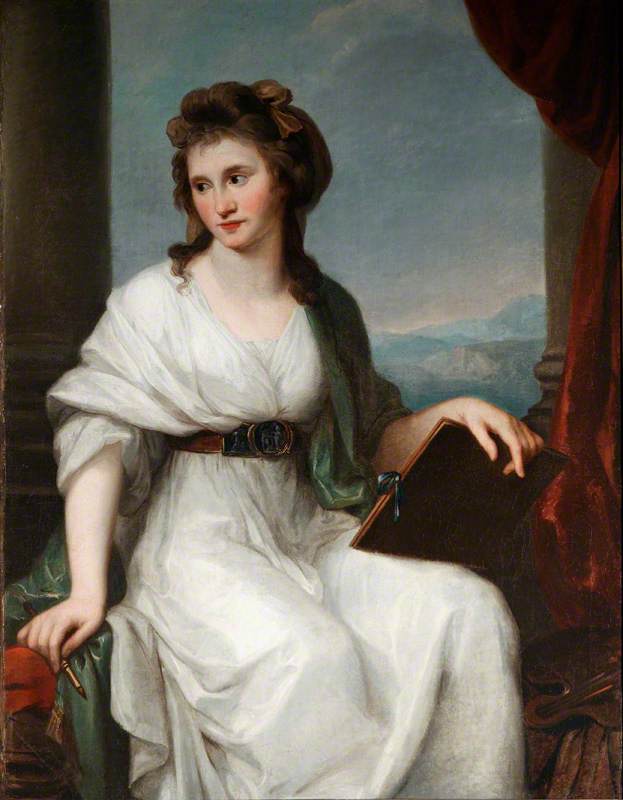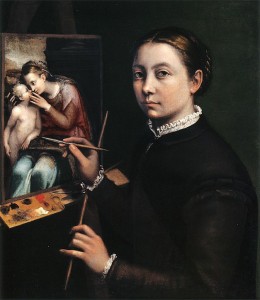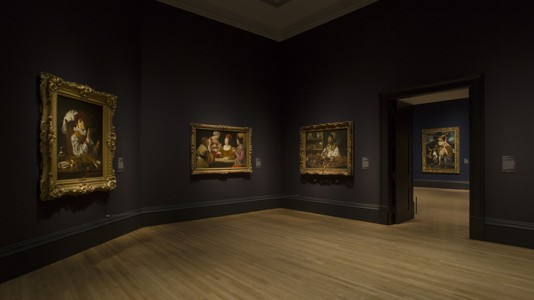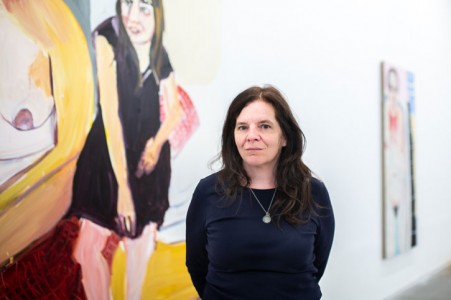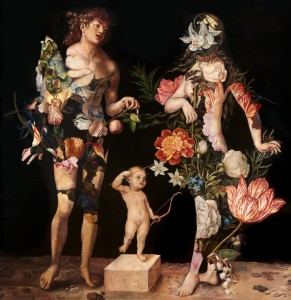Content warning: this story contains reference to sexual assault.
One of the exhibition highlights of spring was supposed to be 'Artemisia' at The National Gallery – the first major UK exhibition to assemble the rarely seen works of the Baroque female painter Artemisia Gentileschi (1593–1654 or after).
Alongside other museums across the UK, The National Gallery took the responsible decision to close its doors to the public (before governmental announcements) and postpone the show. Thankfully, 'Artemisia' is now open to the public and will remain so until 24th January 2021.
Mary Magdalene in Ecstasy
c.1620–1625, oil on canvas by Artemisia Gentileschi (1593–1654 or after) 
For those unfamiliar with the artist, Artemisia was born in Rome at the end of the sixteenth century and led an extraordinary life, one which was usually denied to women of her era.
A prodigious painter who achieved fame and celebrity in her own time, she was overlooked in the centuries following her death and only became a 'household' name known to art lovers in recent decades (though feminist art scholars have been avidly discussing her work since the 1970s).
This resurgence of interest was exemplified by The National Gallery's acquisition of her Self Portrait as Saint Catherine of Alexandria in 2018, making her one of the eight women artists collected by the historic gallery.
While we wait in anticipation for lockdown to be lifted, I spoke to the show's curator, Letizia Treves, to preview what this exciting exhibition has in store.
Self Portrait as Saint Catherine of Alexandria
c.1615–1617
Artemisia Gentileschi (1593–1654 or after) 
Lydia Figes, Art UK: What were the initial challenges when putting together this exhibition?
Letizia Treves: I suppose there were two main challenges – the first, was the relatively short timeframe I had to work with and the other was securing the key loans which I felt were essential.
The exhibition idea stemmed from our acquisition of Artemisia's Self Portrait as Saint Catherine of Alexandria in July 2018, which means I only had about 18 months to put the show together.
I had a very clear idea of what I wanted the exhibition to include. I wanted it to be extremely selective, and the core of the show is made up of the best of Artemisia's signed, dated and documented works, to which I have added a few key works which are essential to the story I want to tell.
Lydia: For half a century, feminist art historians have been discussing Artemisia, but why do you think she is experiencing a resurgence of interest amongst a broader public now?
Letizia: Following Artemisia's (re)discovery in the 1970s, interest in her work has been gathering pace; especially over the last 20 years or so.
I think Artemisia's work captured the broader public's imagination because her life story and her art evoke quite strong, personal responses from people. This is in part due to her biography, but there's also a growing awareness around women artists in general – and she's undoubtedly the most famous female painter of the Baroque era.
Saint Catherine of Alexandria
c.1615–1617, oil on canvas by Artemisia Gentileschi (1593–1654 or after) 
Lydia: There is some doubt as to whether Artemisia used herself as a model for most of her works of female subjects – do you believe she was?
Letizia: The question of whether Artemisia used her own image – or identified with her subjects – is extremely complex, and it's something I explore in an essay in the catalogue accompanying the exhibition.
Self Portrait as the Allegory of Painting (La Pittura)
c.1638–1639, oil on canvas Artemisia Gentileschi (1593–1654 or after) 
Any discussion of Artemisia's portrayal of herself in her paintings needs to distinguish between 'self-portraiture', in the sense of a literal recording of her features, and 'self-representation', where there is a clear resemblance but the artist takes on different guises.
Over half of Artemisia's known paintings have at some point been identified as self-portraits or containing portraits of herself. And because Artemisia frequently used her own image in her paintings, there is a temptation to see her features in almost every Susannah, Judith or Cleopatra that she ever painted.
Judith and her Maidservant
c.1623–1625, oil on canvas by Artemisia Gentileschi (1593–1654 or after) 
We know what Artemisia looked like from portraits of her that survive, and these provide useful evidence in assessing whether a particular representation is a true likeness or not. Artemisia certainly made use of her own image and assumed different roles in her paintings, particularly in Florence where she established her reputation.
She was very much aware of the advantages of doing this: there was an element of promoting herself through her art (as indeed Rembrandt did through his numerous self-portraits and 'tronies') and a practical motivation too. Using a mirror was certainly more straightforward and less expensive than hiring models: later in life Artemisia complains in a letter to a patron of the 'big headache' of having to pay extortionate prices for live models, lamenting that 'when I find good ones they fleece me'.
Portrait of Artemisia Gentileschi (after a self portrait)
c.1627–1628, engraving by Jerôme David (c.1600–c.1662) 
Lydia: Artemisia was also a successful businesswoman in many respects and ran her own studio – will the show draw out other lesser-known aspects of her life?
Letizia: Absolutely. One of the key aims of this show – and one of the things that distinguishes it from what has come before – is that I want visitors to look at Artemisia more fully 'in the round'. The episode of her rape as a young woman has, in a sense, shaped the way in which we speak about Artemisia but I really want visitors to look at her life experiences as a whole and, most importantly, to focus on her artistic achievements.
We are fortunate enough to have Artemisia's words through her letters and I felt it was important to let her voice emerge at various points throughout the show. Seeing her signature on a letter gives you a real sense of immediacy but it also reminds you that she was a real person – and with that come the complexities of her personality!
Portrait of Artemisia Gentileschi
c.1625, bronze medal (copper alloy, cast) by unknown artist 
Lydia: Is there a danger of focusing too much on Artemisia's turbulent life and shocking rape trial rather than analysing her work rigorously, as we might do with male artists of the time?
Letizia: That might have been the case some time ago, but nowadays I think we understand much better the historical context in which the rape and the trial took place. A close reading of the trial transcript actually reveals a great deal, not just about Artemisia but about the times in which she lived.
I think any artist's life experiences must surely influence the making of their art. I would argue that the death of her mother when she was just 12 years old or losing four out of her five children might have been equally traumatic for Artemisia, and must have shaped her both as a person and an artist.
David and Bathsheba
c. 1636–1637, oil on canvas by Artemisia Gentileschi (1593–1654 or after) 
Lydia: Are there any misconceptions surrounding Artemisia? And if so, how will this show address them?
Letizia: Because women of Artemisia's social status were not ordinarily educated, and we know that Artemisia herself was not taught to read or write as a young woman (she says at the rape trial that she could hardly read and couldn't write), there is an assumption that she was uncultured.
In fact, she quotes Ovid and Petrarch in some of her letters, indicating that she was familiar with their texts – even if she had not read them herself, she would have heard them recited.
Solinas 2011, Letter 20, Artemisia to Francesco Maria Maringhi
11th April 1620, Rome, paper 
Research by Jesse Locker over the last few years has shed light on Artemisia's stay in Venice in the late 1620s, and it's here that she appears to have been at the heart of the city's cultural life, taking part in literary academies.
Poems written about Artemisia in Venice praise her for her wit and sharp tongue, as well as for her beauty and artistic talents. It's clear that Artemisia was a much more multi-faceted figure than had previously been thought, and the discovery in 2011 of her letters to her lover Francesco Maria Maringhi reveal her to be resilient and ambitious (as has always been said about her), but also tender and vulnerable at times too.
Lydia: Lastly, what is your favourite Artemisia work and why?
Letizia: This is a hard question to answer because I have so many. I would probably say her Judith and her Maidservant which normally hangs in the Palazzo Pitti, because I find it so sophisticated both from a technical and narrative point of view.
It shows the moment after Holofernes's beheading and Judith and her maidservant are about to make their escape from the enemy camp. The rendering of fabrics is astonishingly realistic, but it's the dramatic tension of the scene which I find extraordinary.
Judith and her Maidservant
c.1615–1617, oil on canvas by Artemisia Gentileschi (1593–1654 or after) 
Artemisia manages to transform this moment into a painting about fear and sisterhood: the two women turn abruptly towards a noise outside the tent and they're united in guilt and panic, in the aftermath of what they've just done. Judith's hand on her maidservant's shoulder has a real sense of urgency and to me, this picture is why Artemisia should be considered one of the best storytellers of her time.
Lydia Figes, Content Editor at Art UK
'Artemisia' curated by Letizia Treves at The National Gallery, London is open until 24th January 2021.





